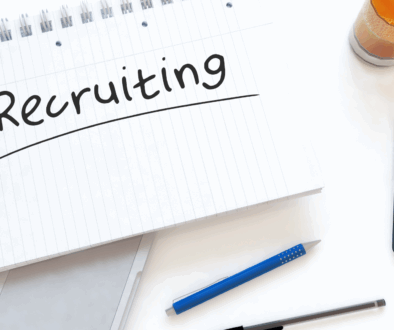Here’s How Recruiting Will Look in 2024
For more than a year, we’ve been sitting down with recruiting and HR experts from across the country on America Back to Work to get their takes on the state of hiring today and how employers can get employees back in the workforce.
As we go deeper into Q4 and head into the holiday season, we’ve aggregated those insights to give you the HR and recruiting trends for the new year.
Hybrid Work to Attract Top Talent
According to a recent McKinsey survey, nearly 90 percent of companies envision integrating both remote and on-site working models in their long-term strategies, and it’s projected that 2024 hybrid work will be the standard working model.
Interestingly, research shows that employees are willing to take a pay cut for hybrid work—reflecting the value workers place on the flexibility and autonomy remote work provides and providing an interesting new tactic for employers to attract the best of the best during recruiting in 2024.
Click here to listen to the America Back to Work episode about hybrid work to figure out how to use it as a differentiator this year.
More Automation via AI
When it comes to recruiting and talent acquisition in 2024, AI is expected to grow in popularity, assisting HR professionals in sourcing candidates, screening resumes, and identifying the most suitable candidates for a particular role.
After all, algorithms built into applicant tracking systems and other recruiting platforms can analyze job descriptions and match them with the skills and experience of potential candidates, making the hiring process more efficient and reducing bias.
AI will also be used to conduct video interviews, personality assessments, and online tests to scan for soft skills and cultural fit. Additionally, generative AI via HR chatbots is projected to function as live support for applicants at more organizations.
For recruiters leaning into the AI trend, 2024 will be about figuring out how to use the tool legally and ethically. Listen to or watch the episode about AI risk management and recruiting to discover how to use AI in HR without getting sued.
Targeted Tactics to Recruit Young Talent
Gen Z will account for more than 27 percent of the workforce by 2024, bringing unprecedented digital literacy, more diversity, and a greater emphasis on mental health to the workplace.
ICYMI, earlier this year, we pitted Gen Z vs. Millennials (and every other generation still in the workforce) in a work-style cage match. We discovered that Gen Z, known for their digital fluency and entrepreneurial spirit, brings a fresh perspective to the workplace.
They prioritize work-life balance and flexibility, often seeking remote or freelance opportunities. They value salary less than every other generation, caring more about whether the work is interesting, values-aligned, and purpose-driven—and doesn’t hurt their mental health. As digital natives, they’re a key asset in carrying any company into the digital age.
To attract an increasingly younger workforce in 2024, employers are expected to offer more flexible work options in the form of hybrid work and freelance opportunities. They’re also likely to promote their mission and values more readily in job descriptions and interviews and provide candidates with an optimized, mobile-friendly hiring process powered by the best technology.
Check out the episode on best practices for recruiting and managing different generations.
Healthcare as a Competitive Advantage
Today, employees look more closely at non-salary compensation offerings when choosing where to work. They’re looking for better PTO, improved work flexibility, and, most importantly, better healthcare benefits.
A recent Forbes Advisor study found that 67% of employees believe healthcare benefits to be the most important employer benefit—and that one in 10 workers would take a pay cut to have access to better health benefits.
That means there’s an opportunity for employers to save money on salary costs in 2024 while also providing employees with a formula for compensation that actually serves them.
That formula will likely include healthcare benefits with more choices to account for the diversity of employees, more comprehensive coverage, more affordable coverage, better providers, mental health support, and better overall education around the program.
Click here to figure out how to turn healthcare into a competitive advantage in 2024.
The Four-Day Workweek
Today, we know that burnout and other work-induced health problems can substantially (negatively) impact productivity, retention, and other key business outcomes, so many organizations are now prioritizing mental health in the workplace and cultivating wellness cultures.
That’s why the four-day workweek has been gaining traction over the past few years—to respond to the employee demand for better work-life balance while prioritizing actions that empower and support a happy, productive, and efficient workforce.
Many employees (87%) are interested in a four-day workweek—so much so that they’d be willing to work longer days, accept fewer benefits, and take a pay cut, among other sacrifices.
As a result, more employers are expected to experiment with the four-day workweek in 2024 to recruit and retain the best employees for their business.
Listen to the four-day workweek episode to learn more.
A Greater Emphasis on Purpose
Eighty-nine percent of employees desire a sense of purpose at work, according to a recent study by McKinsey titled Help Your Employees Find Purpose–Or Watch Them Leave.
And, in a labor market where talent remains scarce and retention is a top priority, employers are ready to give employees what they want.
Applicants can expect to hear more about the company’s mission, vision, work environment, and culture in the job description, on the application, and during interviews as employers try to connect to this side of candidate preferences (and resonate with a talent base that’s getting increasingly younger).
Watch or listen to the episode on purpose-driven work to discover why so many companies are adapting to recruiting this way.
Strides Towards More Inclusive Hiring Practices
Some believe diversity, equity, and inclusion (DEI) is about fairness—about evening the playing field for all involved. Others view it as a driver of innovation and performance since diverse companies see 2.5 times higher cash flow per employee, higher revenues, increased employee engagement, and better retention numbers.
The truth is, it’s both.
To make recruiting more fair and tap into the benefits that DEI can bring to the bottom line, hiring and HR professionals will focus on pipeline programs to increase the number of applicants from underrepresented groups in 2024.
However, pipeline diversity as a DEI metric is not enough. What’s more important is the percentage of underrepresented candidates hired and how many stick around, so the focus will be on what levers employers can pull to improve retention-friendly, diverse hiring in the new year.
To find out what questions to ask on applications and in interviews to promote diverse hires––and to figure out how to eliminate bias from recruiting––click here.
To access expert insights on recruiting, hiring, and HR as you prepare your organization for 2024, subscribe to America Back to Work and never miss an episode.







